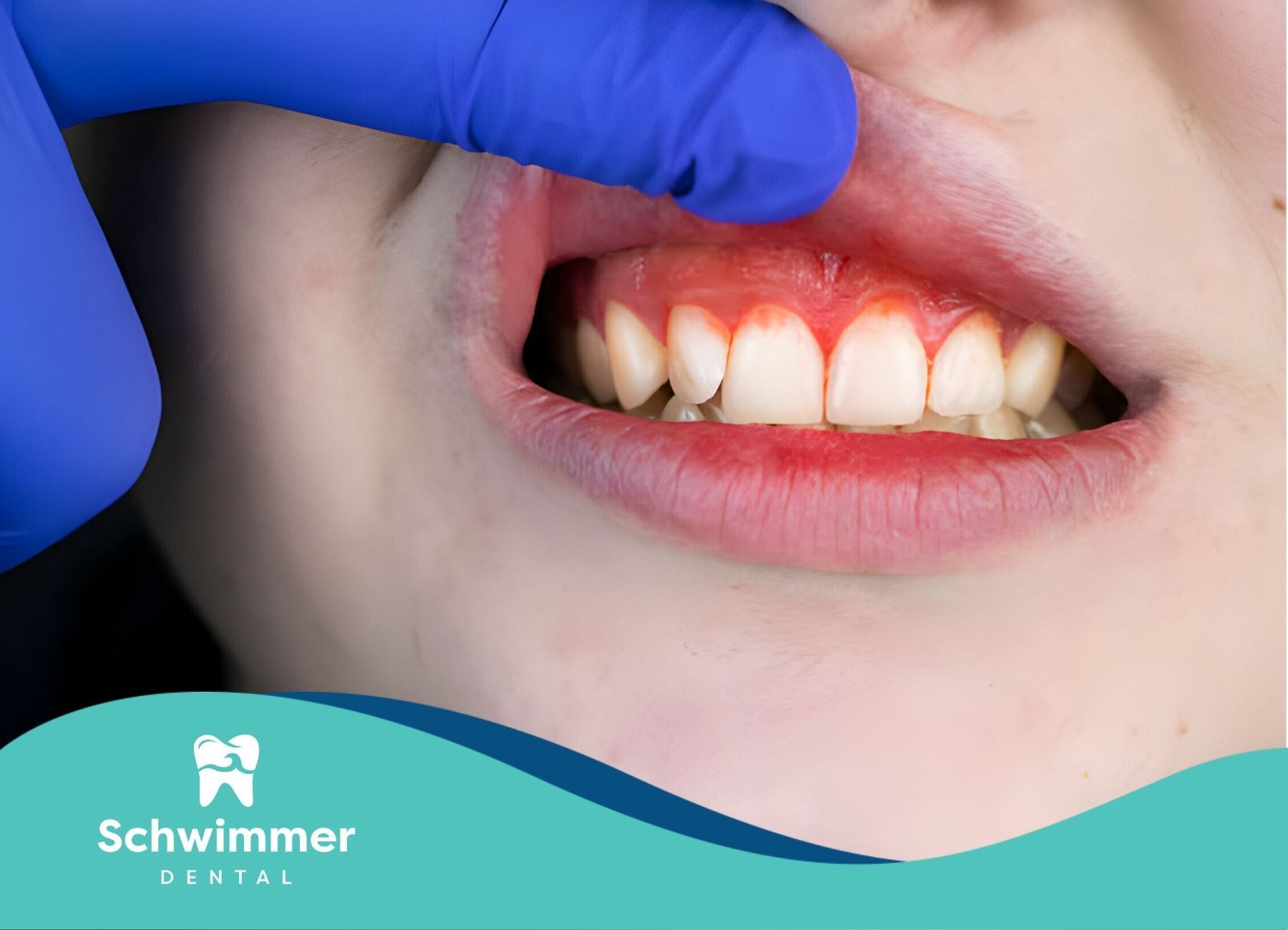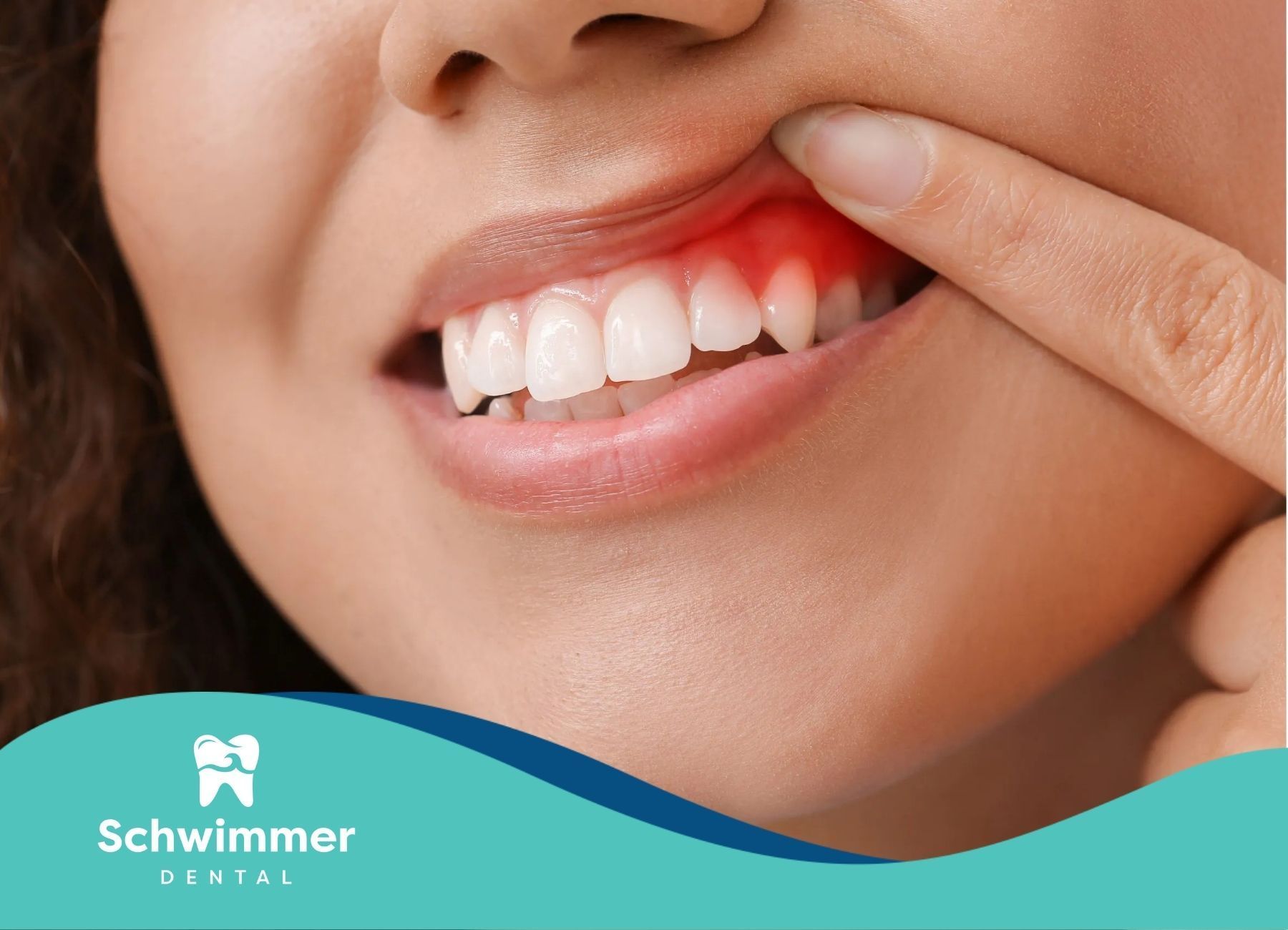Why Are My Teeth Yellow When I Brush Them Everyday? Solving the Puzzle
Many people feel frustrated when they brush their teeth every day but still see yellow teeth in the mirror. Getting a bright, white smile can be tricky. Tooth discoloration is a common dental problem. It can happen for many reasons, not just from surface stains. Let’s look at what makes our teeth lose their shine. We will explore how lifestyle choices, genetics, and every day habits can play a role in this.
Types of Tooth Stains
Understanding why your teeth look yellow starts with knowing about the types of tooth stains. There are two main groups: extrinsic stains and intrinsic stains.
Extrinsic stains affect the surface of your teeth. They are like unwanted guests stuck to your enamel, the outer layer of your teeth. These stains usually come from pigmented foods, drinks, tobacco use, and poor oral hygiene. The good news is that you can often get rid of extrinsic stains with regular brushing, professional teeth cleaning, and whitening products.
Intrinsic stains are a bit harder to treat. They happen inside the tooth's inner structure, called dentin. Intrinsic staining can be caused by some medications, too much fluoride during tooth development, or even genetics. To deal with these stains, you usually need professional dental treatments to bring your teeth back to their best.
Unveiling the Mystery Behind Tooth Discoloration
Taking care of your teeth by brushing them regularly is important, but it doesn’t always lead to a bright white smile. There are many reasons, other than surface stains, that can cause teeth to look yellow.
Let’s examine the common causes of tooth discoloration. Lifestyle choices, genetics, and the natural aging process can affect the color of teeth.
The Role of Genetics in Determining Tooth Color
Believe it or not, your genes play a big part in the natural color of your teeth. Just like you get your eye and hair color from your parents, you also get the thickness and make-up of your tooth enamel. This is the hard outer layer of your teeth.
If you have thicker enamel, your teeth may look whiter. This happens because the thick enamel hides the yellow dentin underneath. On the other hand, thinner enamel can show the dentin's color more, giving your teeth a yellow look. Some people may also have more porous enamel, which can make their teeth stain easily from food and drinks.
Sadly, you cannot change your genes. But knowing how your genes affect your teeth can help you make smart choices about what you eat, how you take care of your teeth, and what dental treatments to get.
How Age Affects the Whiteness of Your Teeth
Time changes more than how we look; it also impacts our teeth. As we grow older, our tooth enamel wears down. This happens from years of chewing, biting, and eating acidic foods and drinks.
With this natural wear and tear, the enamel gets thinner. This makes the yellow dentin underneath show more. Because of this, our teeth may look yellowish as we age, even if we brush regularly and keep up with good oral hygiene.
Also, the dentin itself can get darker over time. This adds to the yellowing of our teeth. While we cannot stop getting older, we can help lessen its impact on our teeth. We can do this by practicing good oral hygiene and visiting the dentist regularly.
Common Culprits of Yellow Teeth
Genetics and aging do affect our teeth, but everyday habits matter a lot, too. Our choices can greatly change the color of our teeth. A bright, white smile often shows our lifestyle, especially what we eat and drink and any bad habits we might have.
For example, that morning coffee and the occasional glass of red wine can stain our teeth. Some things we enjoy hurt our pearly whites more than we realize. Here are some usual reasons for yellow teeth:
Daily Beverages That Stain Your Teeth
We all enjoy our favorite drinks, but some of them can stain our teeth.
- Red Wine: This drink is known for its deep color and strong taste. However, it has tannins. These plant compounds can stick to tooth enamel and cause staining.
- Dark Sodas: Colas and other dark sodas have pigments that can stain teeth. Their acidity can erode enamel, which makes your teeth more likely to discolor.
- Tea: A warm cup of tea can also lead to yellowing of teeth. Black tea has tannins too, just like red wine, and can result in tough stains over time.
If you enjoy these beverages, try to drink them in moderation. Make sure to rinse your mouth with water afterward to reduce their staining effects.
The Impact of Smoking on Oral Health
Smoking negatively affects your health, including your oral health. It doesn't just cause bad breath; it also leads to tooth discoloration and other dental issues.
The nicotine and tar in tobacco products can stain your teeth yellowish-brown. Nicotine starts clear, but when it meets oxygen, it turns into a yellow, sticky substance. This residue gets into the tiny holes of your enamel. Tar is dark and also leaves stains on teeth, making them look worse.
Quitting smoking can greatly improve your health and make your smile brighter.
Inadequate Brushing Techniques and Their Consequences
Most of us learn to brush our teeth when we are kids. But brushing properly is not just about moving the toothbrush back and forth. Plague can build up on our teeth if we don't brush well. Plaque is a sticky film of bacteria. It traps food and can lead to discoloration of our teeth.
If we do not remove plaque with regular brushing and flossing, it can turn into tartar. Tartar is a hard substance that sticks to the tooth enamel. It is harder to remove than plaque. Tartar can cause yellowing and many dental problems, like gum disease.
To maintain good oral hygiene, we should master proper brushing techniques, floss daily, and use fluoride toothpaste. This will help prevent plaque and tartar buildup.
Misconceptions About Brushing and Tooth Whitening
Regular brushing is very important for keeping your mouth clean. However, many people believe that brushing is a magic fix for brightening teeth. The truth is that brushing by itself can’t stop or fix tooth discoloration completely.
There are also many misunderstandings about store-bought whitening products and how well they work. Let’s clear up some of these myths and talk about the real facts concerning tooth discoloration and whitening.
Why Regular Brushing Alone Won't Prevent Yellow Teeth
Brushing your teeth two times a day, as dentists suggest, is very important. It helps get rid of food particles, plaque, and surface stains. But just brushing isn't enough to stop or fix all kinds of tooth discoloration.
First, some stains are deep inside the tooth enamel or even in the dentin. These stains don’t come out with brushing alone. It's like trying to clean a tough stain from a white shirt with only water; sometimes, you need a stronger cleaner.
Second, some foods and drinks have strong colors that can go into the tooth enamel and cause intrinsic staining. These stains can’t be brushed away. To remove these intrinsic stains, you will need professional whitening treatments that focus on the discoloration below the enamel.
The Truth About Over-the-Counter Whitening Products
The market has many types of whitening products. You can find whitening toothpaste, strips, rinses, and kits that all claim to make your smile brighter and whiter. Some of these at-home products can make your teeth temporarily look whiter. However, you should be careful and keep your expectations realistic.
Many whitening toothpaste uses gentle abrasives to help remove surface stains. Yet, they don’t have the strength of professional whitening products. While this toothpaste is usually safe for daily use, using highly abrasive toothpaste too much can harm your tooth enamel. This can cause more tooth sensitivity and create dental problems.
OTC whitening strips and kits have lower amounts of hydrogen peroxide. This is the main ingredient that whitens teeth. They are safe if you follow the instructions. But using them too often or incorrectly can lead to tooth sensitivity, gum irritation, and uneven whitening results.
Proactive Measures to Prevent Tooth Discoloration
Fortunately, you don't always need costly dental treatments to have a bright smile. Sometimes, professional help is needed, but you can also use a few simple steps every day. These steps can help reduce tooth discoloration.
Here are some easy tips to keep your teeth white and your smile shining:
Foods That Naturally Whiten Teeth
Adding certain foods to your diet can help brighten your smile. They can gently remove surface stains and increase saliva production. This protects your tooth enamel by neutralizing acids.
Here are some tooth-friendly foods to put on your grocery list:
- Crunchy Vegetables: Raw, crunchy veggies like carrots, celery, and apples can scrub your teeth and help produce more saliva.
- Citrus Fruits: Fruits like strawberries and pineapple have enzymes that break down stains. Just remember to eat them in moderation and rinse your mouth later since they are acidic.
- Dairy Products: Foods like milk, cheese, and yogurt are high in calcium and phosphates. They help strengthen tooth enamel and neutralize acids that can wear it down.
Keep in mind that while these foods can make your smile brighter, they should not take the place of regular brushing, flossing, and dental checkups.
The Importance of Regular Dental Checkups
Visiting your dentist for checkups and cleanings is very important for good oral hygiene. It helps to catch any dental problems that could cause tooth discoloration.
When you go for a professional teeth cleaning, your dental hygienist will remove plaque and tartar. They can reach places that are hard to clean at home. This deep cleaning makes your smile brighter. It also helps stop gum disease and tooth decay.
Regular dental exams help your dentist keep track of your oral health. They can find early signs of tooth decay, gum disease, or other issues that might change the color of your teeth. Catching these problems early is key to preventing more damage and keeping your natural teeth healthy. If you’re searching for dental cleaning near me, schedule an appointment today to give your teeth the care they deserve!
Conclusion
In conclusion, it is important to understand why teeth turn yellow to keep your mouth healthy. Genetics, aging, what you eat, and your daily habits all affect tooth discoloration. While brushing daily is very important, it might not be enough to stop yellowing.
To help with this, think about eating teeth-whitening foods and going to the dentist for regular checkups. Also, be careful with drinks that can stain your teeth, and be aware that smoking can make discoloration worse. By taking these steps and looking at the main causes, you can work towards keeping your smile bright and healthy. Don’t forget getting advice from your dentist is the best way to keep your teeth white.
At Schwimmer Dental, we understand how frustrating yellow teeth can be, even with daily brushing. As the best dental provider clinic in New Jersey, we go beyond the basics, offering professional cleanings and advanced whitening solutions to uncover your brightest smile. Don’t let discoloration hold you back—schedule a consultation with Schwimmer Dental today and let us help you solve the puzzle of a radiant smile!



